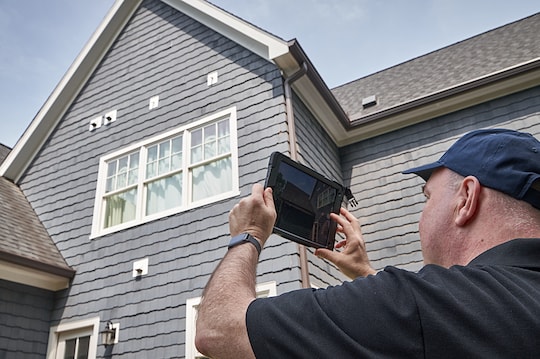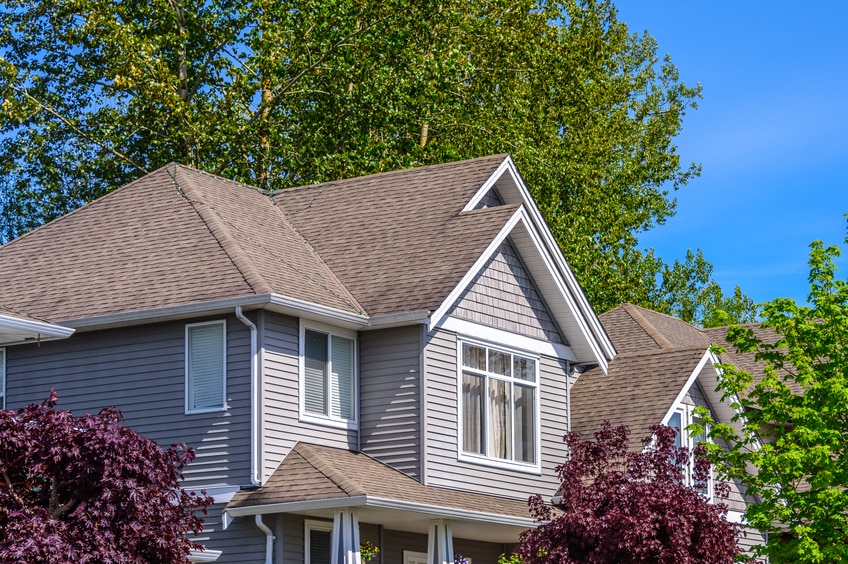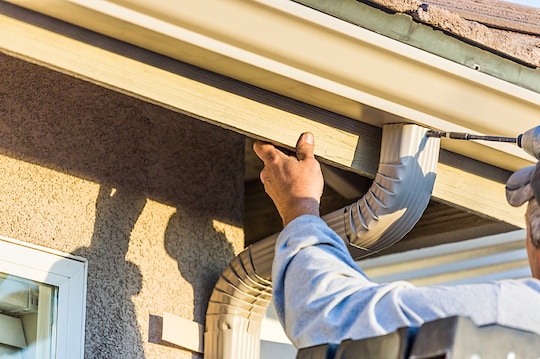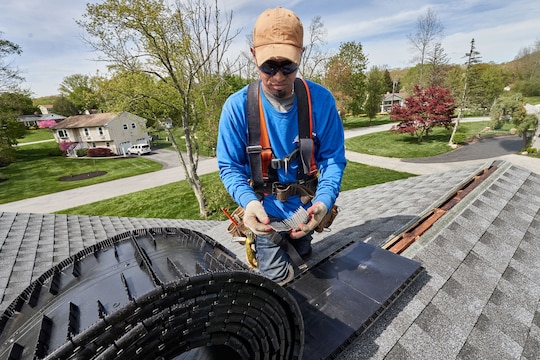
You have no shortage of options when you go to select roof shingles for your home. That can be a blessing and a curse—while you have the flexibility to boost your home's curb appeal in a way that matches your personal style, the overabundance of choices can make picking one all the more difficult.
Not sure where to start? Certain shades and materials may make more sense based on your area, your home, and your priorities for your roof.
Location and Weather
In real estate, you often hear the phrase "location is everything." The same is true of choosing roof shingles for your home. In areas that typically face extreme weather, homeowners may want to consider the following factors.
- Wind: If your home is in a region with strong winds, consider a shingle that either comes with, or is eligible for, warranty coverage for blow offs in high winds.
- Hail: Homeowners in the hail belt may want to consider shingles that pass the UL 2218 Class 4 impact resistance test. While roof warranty coverage is not typically offered for hail damaged roofing shingles, shingles that pass this test have the best chance of standing up to hail.
Energy Efficiency
Roof shingles may influence the cooling efficiency of your home. In hotter regions with intense direct sunlight, you might consider installing a cool roof shingle designed to reflect more of the sun's rays to help keep your attic cooler. This may result in cooling cost savings.*
On the other hand, if you live in an area where the climate is colder for more months of the year, a less reflective shingle that absorbs more of the sun's rays may be a better option.
Another option to consider is installing solar panels on your roof. The Timberline Solar (TM) roofing system includes traditional shingles and solar shingles that can be installed by one contractor.
Warranty Coverage
When you invest in a roof for your home, consider the warranty options available. With GAF, homeowners can choose from five different levels of warranty protection. Warranty eligibility depends on the combination of GAF products installed, as well as who installs them. Most GAF roofing shingles come with a Lifetime** limited warranty, and 10-50 years of non-prorated coverage. When installed with the required combination of GAF Accessories,Timberline HDZ® Shingles are eligible for the WindProven Limited Wind Warranty- an industry first 15-year limited wind warranty with no maximum wind speed limitation.***
Shingle Style
The look of roof shingles comes down to more than just their color. There are three different types of shingles—three-tab, architectural, and designer. The style of your home may dictate which shingle is right for you.
A three-tab is a flat, single-layered shingle and an economical choice to protect your home.
Architectural shingles deliver enhanced aesthetics and are made up of several layers that provide depth and dimension to your roof. GAF Timberline HDZ® architectural shingles are one of the most popular asphalt shingle choices.
Designer shingles deliver a higher-end, more finished appearance for your home that mimics the look of other types of roofing materials such as slate or wood. The style of your home can be a good starting point to help you pick a fitting style to complement it.
Try Before You Buy
After you have reviewed all the considerations above, you can test out what your new roof is going to look like on your home. GAF offers a comprehensive Style Guide that not only explains the color options but includes a roof visualizer tool. Try on different styles and colors of shingles to see how they complement your home—the tool lets you either upload a photo or choose from a model in a similar style to your home.
Once you've got your ideal roof in mind, you're ready to find a contractor certified by GAF**** near you to bring your vision to life.
*Savings will vary and are not guaranteed.
**Definition of Lifetime: The word "Lifetime" means as long as you, the original owner(s) [or the second owner(s) if coverage was properly transferred during the Smart Choice Protection Period], own the property where the shingles and/or accessories are installed. The Lifetime warranty is applicable only to shingles and accessories installed on a single-family detached residence owned by individuals. For any other type of owner or building, such as a corporation, governmental entity, religious entity, condominium or homeowner association, school, apartment building, office building, or multi-use structure, the length of the warranty is 40 years
***15-year WindProven™ limited wind warranty on Timberline HDZ® Shingles requires the use of GAF starter strips, roof deck protection, ridge cap shingles, and leak barrier or attic ventilation. See GAF Roofing System Limited Warranty for complete coverage and restrictions Visit gaf.com/LRS for qualifying GAF products.
****Contractors enrolled in GAF certification programs are not employees or agents of GAF, and GAF does not control or otherwise supervise these independent businesses. Contractors may receive benefits, such as loyalty rewards points and discounts on marketing tools from GAF for participating in the program and offering GAF enhanced warranties, which require the use of a minimum amount of GAF products.






